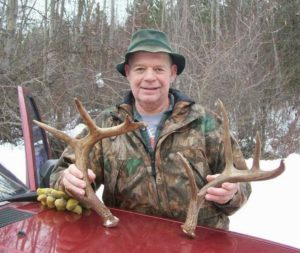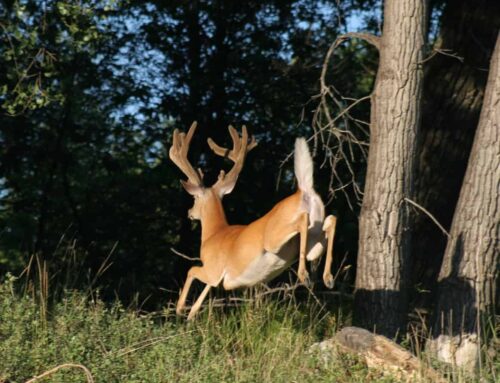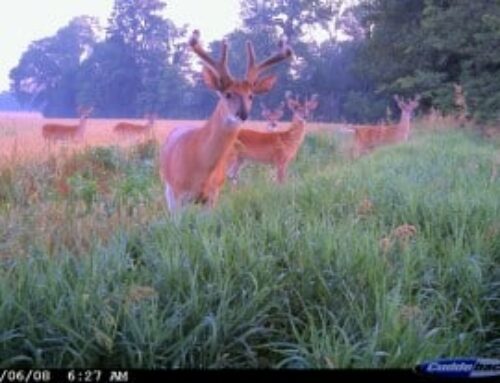 When you’re out shed-hunting, pick up a deer trail and follow it for a few hundred yards to a half-mile or more, until you come to a thick and obvious deer bedding area. In winter a good one is a brushy southern exposure that gets midday sunlight, or the east side of a grassy ridge where deer hunker out of a northwest wind. You’re apt to find fresh deer beds, tracks and dropping in the melting snow here.
When you’re out shed-hunting, pick up a deer trail and follow it for a few hundred yards to a half-mile or more, until you come to a thick and obvious deer bedding area. In winter a good one is a brushy southern exposure that gets midday sunlight, or the east side of a grassy ridge where deer hunker out of a northwest wind. You’re apt to find fresh deer beds, tracks and dropping in the melting snow here.
Back in hunting season you would have stopped before entering the bedding cover, tested the wind and worked the outer fringes of the sanctuary so as not to spook any deer.
But now, plow right in.
Of all the sheds you find this year, 50 percent will be around food sources and on trails leading to them, and the other 50 percent will be in winter bedding thickets. So dive into these covers, go slow and look close.
While you’re at it, analyze all the rubs, old scrapes and trails you’ll find in there. Try to get an idea of the easiest and best-hidden routes a mature buck would use to enter and exit the cover according to various winds. That info will help when you come back to hunt the area in the late season next fall.





